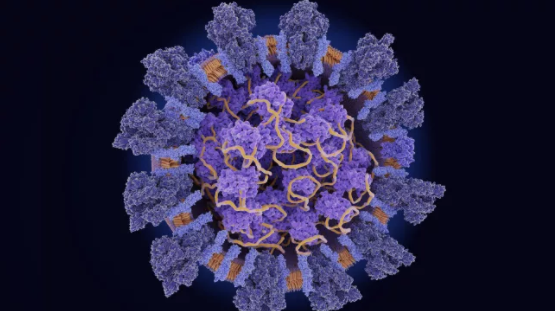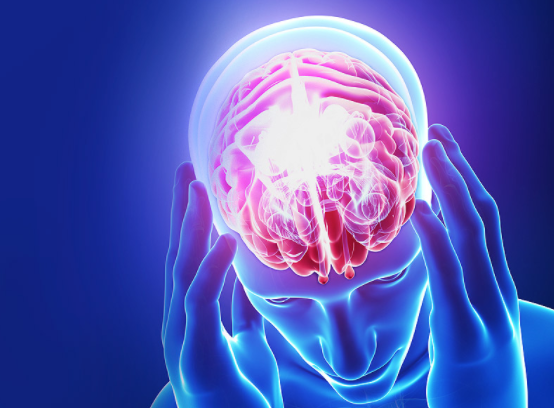COVID-19 Update July 11, 2020
- icshealthsciencejournal

- Jul 11, 2020
- 4 min read
This article contains:
Coronavirus Mutation
The Three Stages of COVID-19 Brain Damage
Coronavirus Mutation
Written By: Tawan Petpaiboon
The situation of the pandemic right now is already affecting the whole world, yet scientists have found a new mutation in the coronavirus called “D614G.” This new type of virus is part of the G strain population. Although it is found in low levels in the most recent cases of infected patients, it has been increasing constantly. A group of scientists hypothesized that the mutation is not new. Additionally, they said that the increase of the mutation found in the virus is due to natural selection. D614G facilitates the virus when entering the cell, since it alters the spikes on the surface of the virus.
The coronavirus that proliferated throughout China is from the group called “D strain.” It was first found in the Xinfadi market of Beijing. Soon after, the G strain started to spread among people. This G strain is caused by the substitution of adenine for guanine nitrogenous base in one part of the virus’ genes. From April 2020 to May 2020, 78% of the cases was observed to be a G strain virus. This took place while the virus transmitted to Europe and the United States.
An experiment was conducted by some scientists to identify the difference between the G and D strains. They used the technique of “pseudoviruses” in which the genes of the G and D strains are inserted into a pseudovirus to model the structure of the virus; the pseudovirus cannot infect anyone. Then, they tested these viruses on cell samples. The results showed that the G strain can result in more viruses than the D strain can. Also, the number of spikes of the G strain viruses was 2.5 to 9 times of that of the D strain viruses. Similar analyses come from the results of another study in which the scientists experimented on real viruses.
Research from Chinese scientists show that the danger of the G strain coronavirus lies under the fact that immunity from the D strain viruses cannot prevent an individual from developing the disease. The Scripps Research, a medical research team from San Diego, has discovered that the G strain coronavirus can amplify the amount of protein spikes on its surface and can infect humans at a higher efficiency. Even though the G strain has a high ground compared to other types of coronavirus, it might cause a pandemic by luck. That is, the scientists called, the Founder Effect, in which a new population is started by a small group of individuals with the same characteristics.
Unfortunately, the vaccine for this mutated coronavirus is not yet discovered. Therefore, it is recommended by medical teams that people keep themselves sanitized and safe.
The Three Stages of COVID-19 Brain Damage
Written By: Paphapin Pairojtanachai
It is “increasingly evident” that such a small virus like the SARS-CoV-2 can wreak havoc in the central nervous system (CNS) and cause various neurological illnesses. The reason is that the SARS-CoV-2 binds to a protein called angiotensin-converting enzyme 2 (ACE2). When the ACE2 binds to respiratory epithelial cells and epithelial cells on blood vessels, the bound SARS-CoV-2 sets off an inflammation called cytokine storm. This then leads to “hypercoagulation cascades,” which bring about blood clots of many sizes. Thus, if the virus happens to penetrate into the brain, it can generate demyelination or neurodegeneration.
A recent review published in the Journal of Alzheimer’s Disease arranges the impact of the coronavirus on the CNS into three stages. This three-stage “NeuroCovid” classification scheme has been adopted as a basis from which further research on SARS-CoV-2 and the CNS can be built on.
NeuroCovid Stage I - The scope of the SARS-CoV-2 binding to the ACE2 is restricted to the epithelial cells of the nose and mouth, and the primary symptoms include a temporary failure to smell and taste. Cytokine storms remain “low and controlled”.
NeuroCovid Stage II - The virus triggers a cytokine storm in the blood vessels, which causes blood clots to form in the lungs; this cytokine storm may travel to the brain via the cerebral blood vessels, and the blood clots can cause small or large strokes.
NeuroCovid Stage III - A violent cytokine storm damages the blood-brain barrier (a protective layer in the blood vessels of the brain), allowing the virus, as well as inflammatory markers, to enter the brain and induce neuronal cell death. Symptoms include seizures, delirium, coma, or encephalopathy, and may even result in death.
Stage 3 of the COVID-19 brain damage is the most dangerous among the others as patients in this stage are likely to have long-term consequences since the coronavirus particles have invaded their brains and can stay dormant in neurons for many years. Moreover, “[studies] of coronaviruses have shown a link between the viruses and the risk of multiple sclerosis or Parkinson's disease even decades later,” says the lead author, neurologist Majid Fotuhi, PhD, medical director of NeuroGrow Brain Fitness Center in Virginia and affiliate staff at Johns Hopkins Medicine.
Fotuhi advises that all hospitalized patients infected with the coronavirus should receive an MRI in order to identify any potential neurological damage and to be informed about post-discharge monitoring before leaving the hospital. He also mentions that between 36% to 55% of COVID-19 patients exhibit neurological symptoms that physicians, however, are unlikely to notice unless they look for them.
However, Kenneth Tyler, chair of the Department of Neurology at the University of Colorado School of Medicine, disagreed with Fotuhi. He explains that using the MRI equipment on infected patients risks exposing the disease to uninfected patients who undergo MRI as well. Therefore, Tyler shares his opinion that only patients who have unexplained neurological symptoms should go through MRI because there may be underlying structural abnormalities. Routine MRI, therefore, is not necessary.









Comments